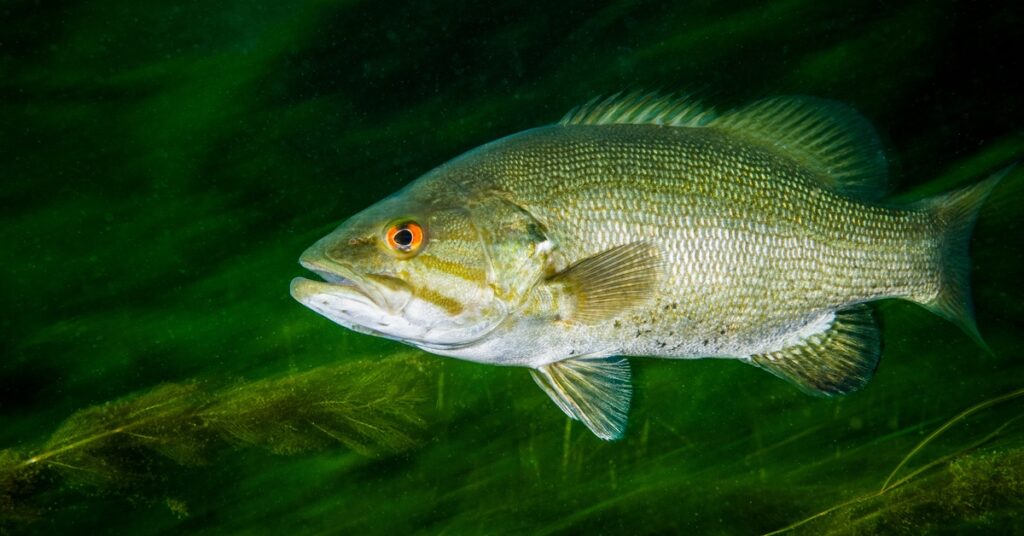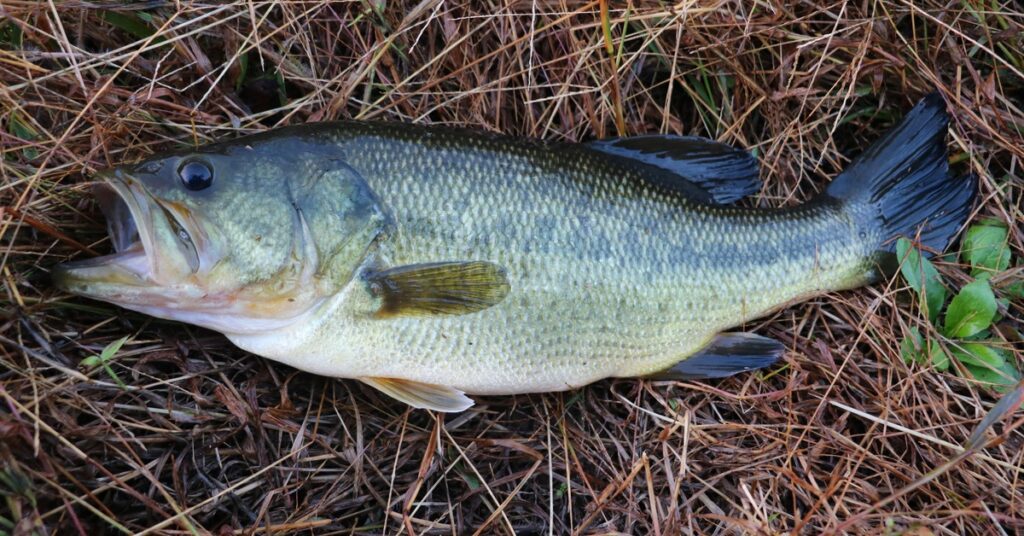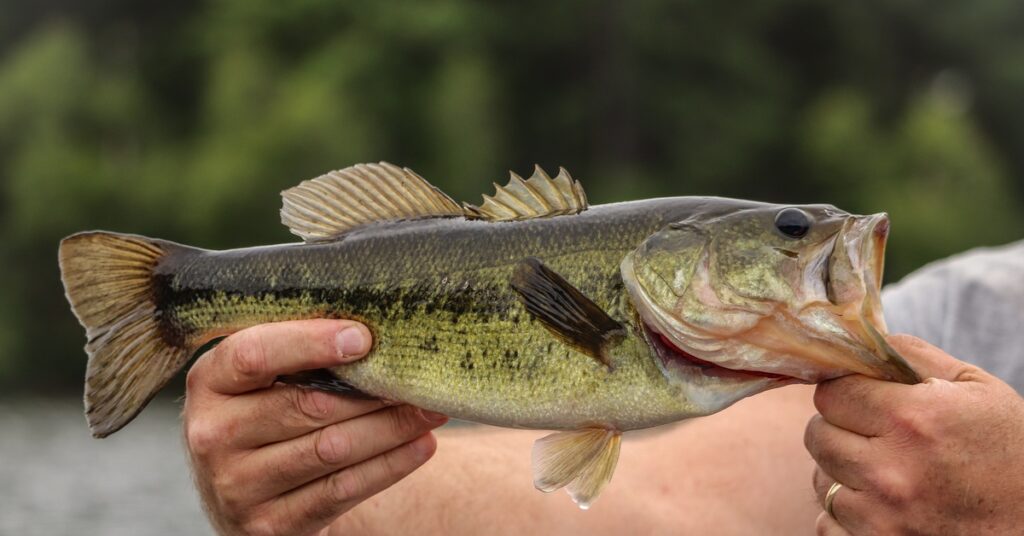As a seasoned angler, you’re probably aware that many fishing fans have had long-standing debates on which is better: largemouth or smallmouth bass. Both species bring unique challenges and rewards, so it’s no wonder there’s so much passion about catching them. Understanding the differences between the two can make you a better angler so your time on the water is more successful.
Read on for more information on fishing for largemouth vs. smallmouth bass in the Lone Star State. Once you know what sets them apart, you’ll feel more confident identifying them and become better at creating strategies to catch bass in their unique environments.
How To Tell the Differences Between the Two Fish
Despite their similar names, largemouth and smallmouth bass look and behave differently. Read on to learn about these differences so you can identify fish more quickly when they’re on your line.
Their Mouths
Largemouth and smallmouth bass differ in terms of their mouths. For instance, largemouth bass have mouths that extend beyond their eyes and a gaping maw that allows them to consume large prey. On the other hand, smallmouth bass have mouths that do not extend past their eyes.
Their Dorsal Fins

Another critical detail to look at when identifying these bass species is their dorsal fins. Largemouth bass have a distinct separation between the front and rear portions of their dorsal fins. The rear portion can look smaller than the front portion. However, smallmouth bass do not have this separation, making their dorsal fins look like a singular, continuous ridge. Once you learn to spot this difference, it’s a quick and reliable way to differentiate these fish.
Their Colors
The two bass also distinguish themselves from each other through their colors. For example, a largemouth bass is the textbook image of an olive-green fish. Their bodies feature shades of green, and their bellies fade to a soft white as you move downward.
Although smallmouth bass might have a green hue, they could also display deep bronze or brown tones, earning them nicknames like “bronze back.” The coloring provides camouflage in rocky terrains with sandy or muddy bottoms, which are common in the rivers and lakes where they live.
Their Markings

Even the patterns on largemouth and smallmouth bass differ. Largemouth bass sport horizontal stripes that run along their sides and form a noticeable band from head to tail. These markings almost look like an artist painted lines on their flanks.
In contrast, smallmouth bass feature vertical markings, giving them a tiger-like appearance. The bars appear darker against their bronze bodies and help them vanish into rocky shadows, frustrating any predator that dares to chase them.
Their Personalities
One last way that these two species differ is in terms of their personalities. People often describe largemouth bass as bold since they’re the kind of fish that will strike at just about anything they deem edible. However, they can also be rather careful, as they will consider the benefits of pursuing their prey.
Despite the boldness of largemouth bass, their smallmouth counterparts can be feistier and more combative. When hooked, they put up a fight and often leap out of the water. This spirited nature makes smallmouth bass an exciting challenge for anglers who admire their tenacity and energy.
Tips for Catching Largemouth Bass
After reviewing the differences between largemouth and smallmouth bass, it’s time to look at tips for fishing for them. People sometimes describe largemouth bass as opportunistic feeders, and their behavior reflects this reputation. To target them successfully, you must learn about their patterns so you can increase your chances of hooking a big one.
Travel to Warmer Waters
Largemouth bass have a strong preference for warmer water temperatures. If warm water is within reach in your local lake or pond, that’s likely where they’ll be hanging out. These fish bask in the heat like sunbathers on a beach and are often found near shallows that warm up faster than deeper areas.
Look for Shallow Areas With a Cover
Largemouth bass also adore shallow areas with a form of cover. Whether it’s fallen trees, thick weeds, or lily pads, largemouth bass often lurk nearby. They use these areas for ambushing prey, ready for anything that happens to swim by. Imagine yourself tossing a lure into those shadows; there’s a good chance a lurking bass will snap it up.
Tips for Catching Smallmouth Bass
When targeting smallmouth bass, you’ll need to go to an entirely different environment than hunting for largemouth fish. Read on to learn about their preferences so you can catch these feisty fighters more effectively.
Go to Colder Waters in the Spring
You can usually find smallmouth bass in areas with cooler temperatures. When fishing in the spring, go to areas where the water temperature will be in the 45-degree range. You may also want to take a fishing trip earlier in the morning or later at night so the water will be cool.
Focus on Open Areas
Smallmouth bass populations thrive in areas with rocky terrain and open spaces. Their natural habitat consists of pebble-covered riverbeds, rocky ledges, and gravelly lake bottoms. Focus your efforts near open, rocky areas rather than concentrating on vegetation-heavy spots. Cast toward boulders, edges, and underwater rock formations where fish activity is frequent. Also, smallmouth bass don’t shy away from current. They understand how to work with the flow and take full advantage of areas that force food toward them.
Find More Bass With Bassquatch Fishing
Fishing for largemouth and smallmouth bass can offer you two completely different experiences. Whether you’re drawn to the sleek, powerful ambushes of largemouth fish or the scrappy, resilient fights of smallmouths, understanding their unique traits helps refine your tactics and makes your trip more fun.
The next time you go fishing for these fish species in Texas, make sure to do it with Bassquatch Fishing. Our Austin fishing guides can take you to ideal spots and even give you advice on how to improve your techniques. Chasing bass is always an adventure worth taking.

Leave a Reply